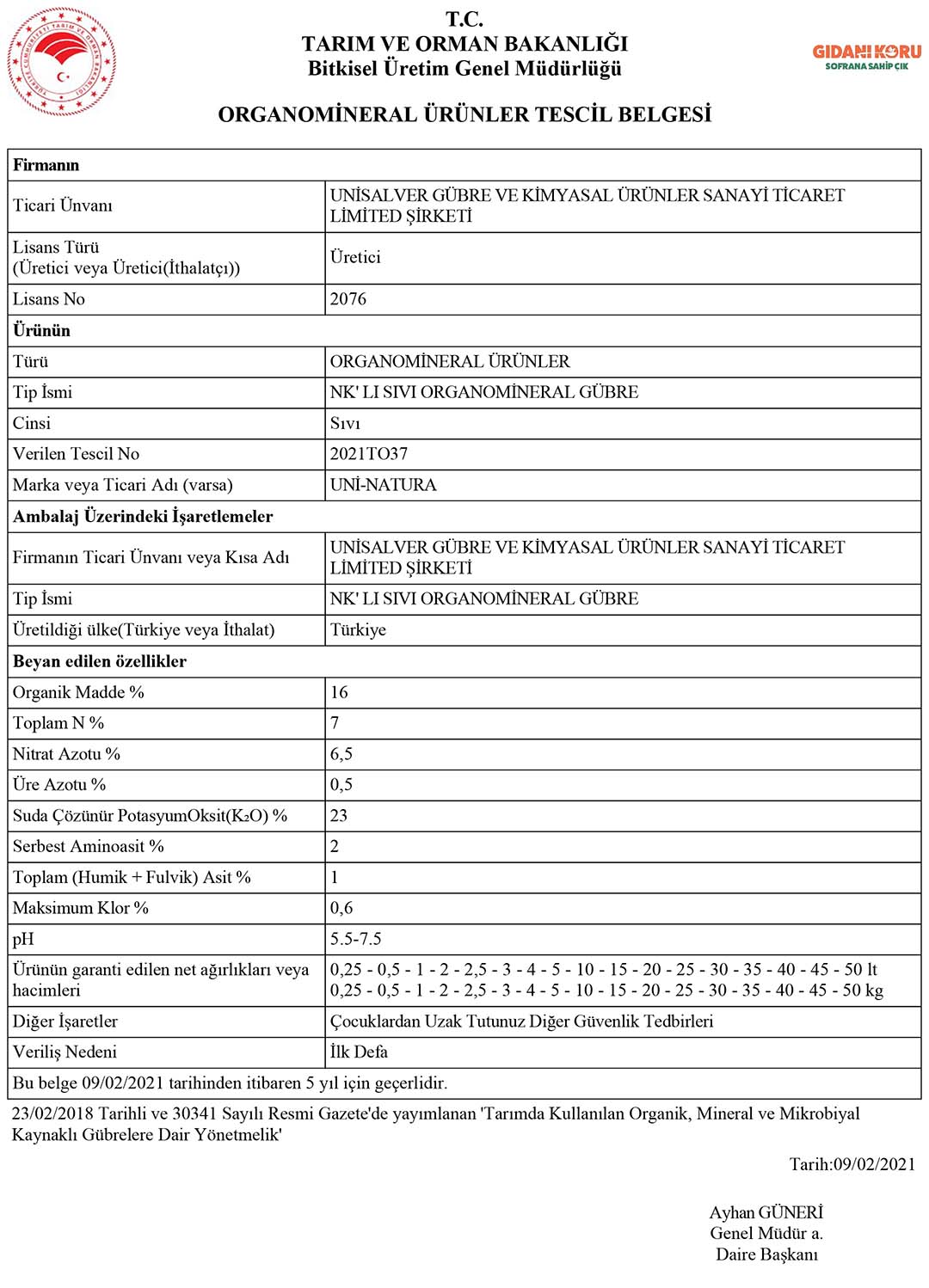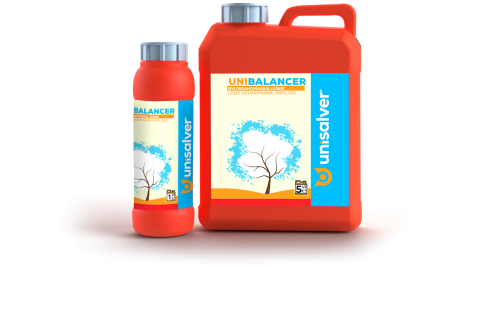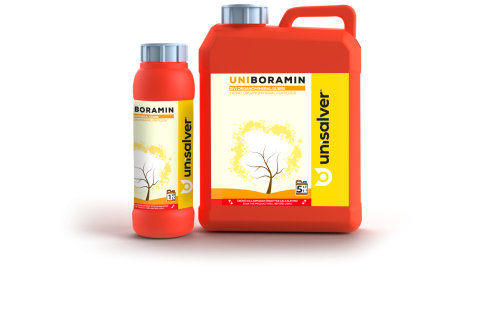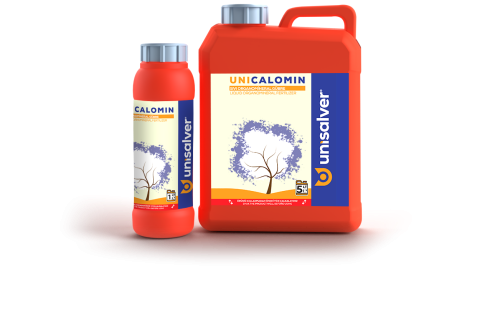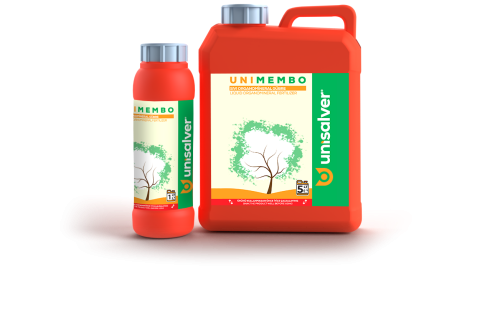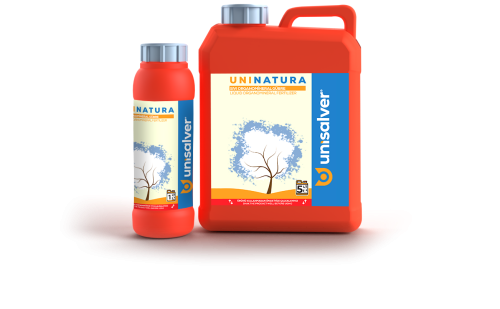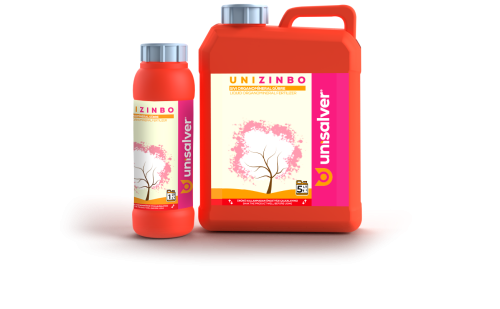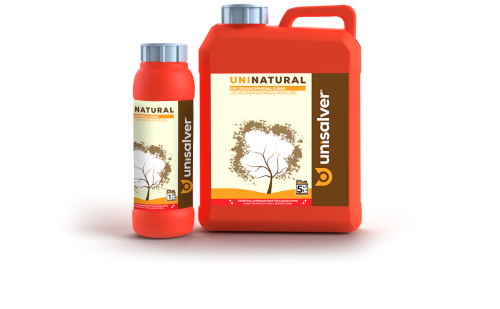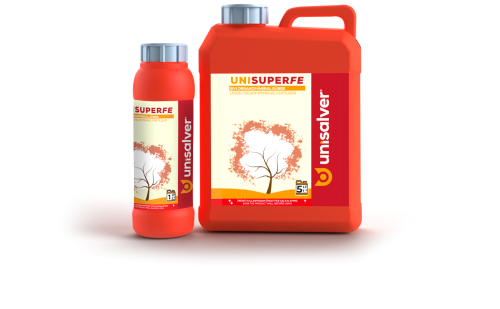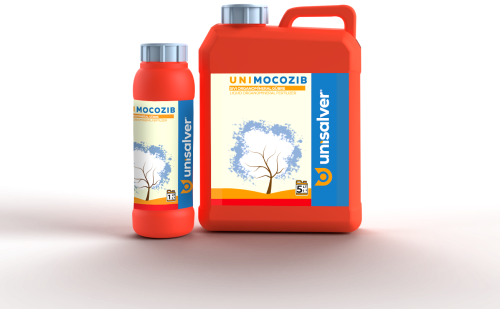
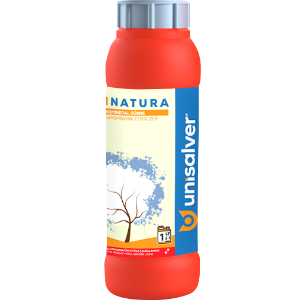
Uni-Natura
(LIQUID ORGANOMINERAL FERTILIZER WITH NK ADDITIVE)
It is produced from a potassium source with very low salinity, supported by a special technological formula. Potassium is a mobile ion. It is a regulatory mineral. Starch regulates protein synthesis, cell expansion, sugar transport, photosynthesis increase, intra-plant water transport during drought periods. It activates many enzymes. It makes the plant resistant to cold. It provides seed maturation, chlorophyll formation, development of plant root system. It regulates the opening and closing of stomatal cells in leaves and the uptake of water by stem cells. It eliminates the negative effects of excess nitrogen in the soil. By delaying the early development of potash, it prevents the damage of insufficient seed filling caused by the early ripening effect of phosphorus. In plants with sufficient potassium, water loss is reduced by transpiration.
Potassium deficiency does not produce immediately visible symptoms in the plant. First, there is regression in growth, then the leaf margins turn light yellow and brown in the form of bands. In potassium deficiency, CO₂ assimilation in photosynthesis is reduced. Drought tolerance and disease resistance are reduced. Quality and productivity decrease. Fruits do not ripen homogeneously. Fruit size remains small. Shoot growth and plant resistance are reduced. Coloration is adversely affected.
The presence of excess potassium in the soil does not cause harmful effects on the plant, unlike the excess of nitrogen and phosphorus. Excess potassium affects manganese intake.
In vegetables and fruits, potassium and calcium supplements should be applied together during the fruit growth period. In some fruit trees close to harvest, UNI-NATURA and UNI-ZINBO should be applied together.
| PLANT NAME | APPLICATION PERIOD | SOIL APPLICATION (With drip irrigation) | FOLIAR APPLICATION |
| GREENHOUSE AND OPEN AREA VEGETABLES (Tomato, Pepper, Cucumber, Eggplant, Bean, Strawberry, Melon, Watermelon, Zucchini etc.) | After the first formation, 3-4 applications at 15-20 day intervals | 2 lt / da | 200 ml to 100 Liters of water |
| WINTER VEGETABLES THAT CAN BE EAT WITH LEAVES (Curly, Lettuce, Cabbage, Spinach, Cauliflower, Broccoli, Artichoke etc.) | 15-20 days before harvest | 2 lt / da | 200 ml / da |
| TUBEROUS PLANTS (Sugar Beet, Carrot, Potato, Onion, Celery etc.) | A total of 2-3 applications every 3 weeks from the tuber growth period | 2 lt / da | 200 ml / da |
| ALL FRUIT TREES (Peach, Apricot, Cherry, Plum, Apple, Pear, Quince, Citrus Fruit, Olive, Vineyard, Hazelnut, Pistachio, Banana, Fig, Pomegranate, Avocado, Kiwi etc.) | A total of 3 applications once a month from the fruit growth period | 3 lt / da | 300 ml to 100 Liters of water |
| INDUSTRIAL PLANTS (Cotton, Sunflower, Tobacco, Safflower, Rapeseed, Sesame, Corn etc.) | When the plant height is 30-40 cm | 2 lt / da | 200 ml / da |
| ALL LEGUMES (Chickpeas, Beans, Lentils, Soybean, Legumes, Peas, Peanuts etc.) | 2 applications every 15 days with fruit set | 2 lt / da | 200 ml / da |
| GRAINS (Oats, Wheat, Barley, Rye, Rice etc.) | Boot stage period | 2 lt / da | 200 ml / da |
| GREEN AREAS AND CUTTING FLORISTY | In the growing period | 2 lt / da | 200 ml to 100 Liters of water |
| GUARANTEED CONTENT | %w/w |
| Organic Material | 16 |
| Total Nitrogen (N) | 7 |
| Nitrate Nitrogen (N) | 6.5 |
| Urea Nitrogen (N) | 0.5 |
| Water Soluble Potassium Oxide (K₂O) | 23 |
| Total (Humic + Fulvic) Acid | 1 |
| Free Amino Acids | 2 |
| Max Chlorine (Cl) | 0.6 |
| pH | 5.5-7.5 |
